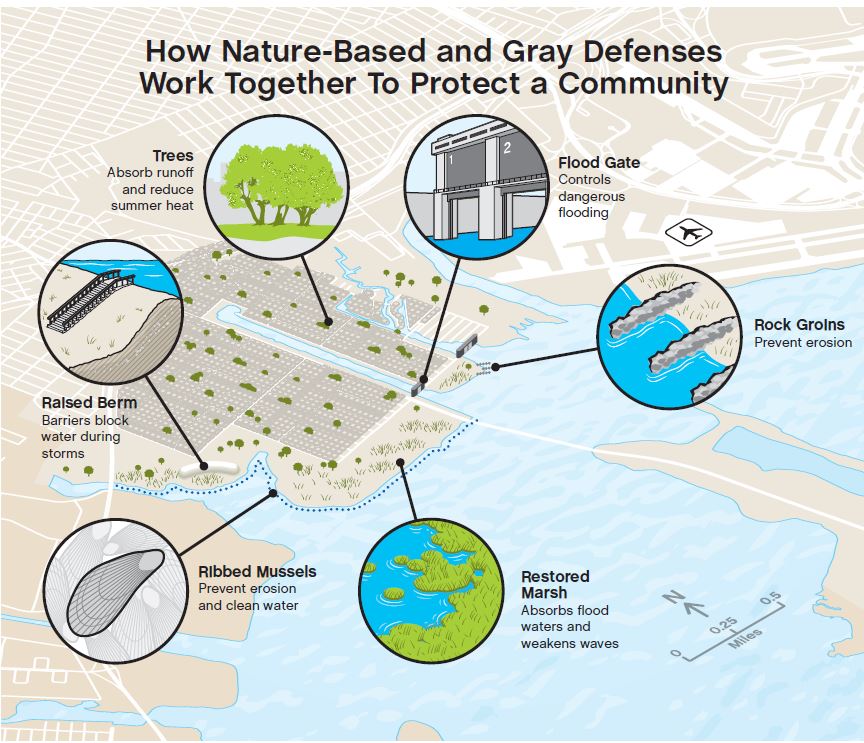Predictions say that climate change will increase the severity and frequency of storms in many parts of North America. Buildings and urban infrastructure must adapt to this new climate reality. The traditional approach has been to build engineered structures such as seawalls, flood channels, and containment ponds. However, a new Nature Conservancy study makes a strong case for incorporating green infrastructure into climate resilience measures.
The report, “Urban Coastal Resilience: Valuing Nature’s Role,” is a case study of the coastal community of Howard Beach in New York City, which was devastated by Hurricane Sandy. The key finding is that a combination of natural and engineered infrastructure is the most effective means of increasing resilience and could result in avoided losses of up to $244 million from a one-in-100-year storm.
According to a press release from TD Bank, which supported the Nature Conservancy study, flood protection standards for most urban and suburban neighborhoods are designed to withstand a one-in-100-year storm. However, severe weather is becoming more common, with storms that used to occur once every 40 years now occurring once every 6 years in some regions of the country.
A 2014 TD Economics report “Natural Catastrophes: A Canadian Economic Perspective” estimates that severe weather incidents will cost Canadians about C$5 billion by 2020, increasing to between $21 billion and $43 billion by 2050. Urban centers are especially vulnerable.

Using green infrastructure to climate proof cities could help prepare for the 1 in 100 year storm.






